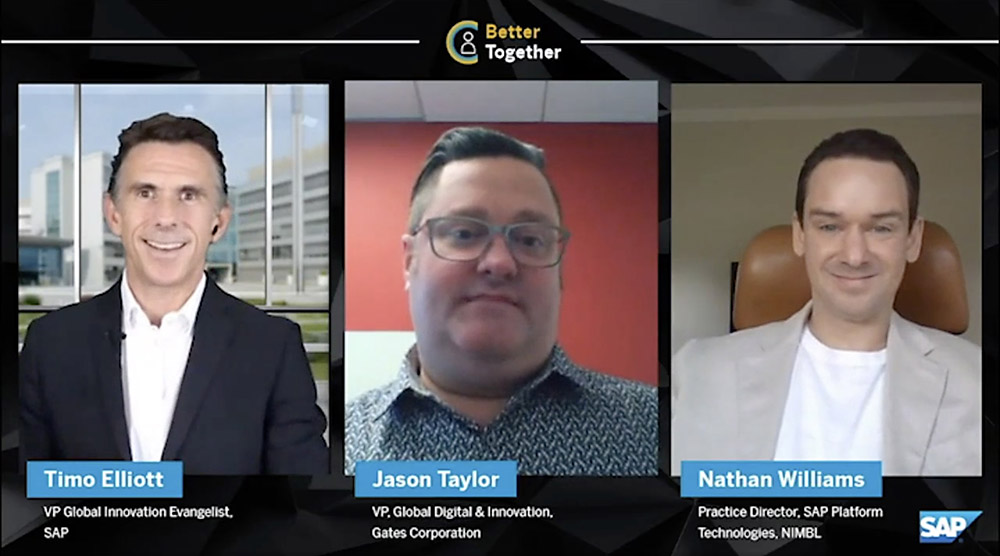The “Better Together” program is a series of conversations is where I give the microphone to SAP customers and partners for an unfiltered look at how they are innovating with SAP’s Business Technology Platform to unlock business value.
The first episode focused on the Gates Corporation and how the company has been able to reinvent their products experience using the latest internet of things technology.
For more than 100 years, Gates has been pushing the boundaries of innovation. Based in Denver, Colorado, the company is a leading manufacturer of fluid power and power transmission solutions that span many industries, from heavy manufacturing to automotive.

I invited Jason Taylor, VP, Global Digital & Innovation, Gates Corporation and Nathan Williams, Practice Director, SAP Platform Technologies, NIMBL, to talk more about the technology behind Gates’ new smart hydraulic hose crimper that was so innovative that it won a prestigious 2020 LEAP Award (Leadership in Engineering Achievement Program)
Background to the project
Hydraulic hose crimpers are one of the essential tools behind innumerable manufacturing processes, designed to join deformable metal fittings with sections of hose and tubing.
The standard Gates hydraulic crimper has been an effective product for a long time, but it requires some expertise—you have to consult a large paper manual to get the right parameter for the type of crimping task you want to do, then you have to dial those numbers in before you crimp your hose.
They’ve now made all that much, much easier with a new, connected, more intelligent device. The new GC20 Cortex smart crimper “takes the guesswork out of hose assembly fabrication” with touch-screen controls, on-board training, integrated eCrimp setting and remote support.
It’s cleverly designed, with a pull-out tablet that is easy to maintain. You simply choose your job, it sets everything for you, and you push the button to crimp. And thanks to clever design, it’s even possible to retroactively fit the new technology to the tens of thousand of existing Gates crimpers in use across North America.
This video from design partner breadwear gives a nice overview of how the new customer experience compares to the existing crimpers:
It’s a great example of win/win use of technology: customers get an easier-to-use product and can work faster and more efficiently, while for Gates it opens up a whole new world of insight into how customers are using their tools, and the company can now explore towards new business models such as pay-for-usage.
For Gates, the patent-pending smart crimper represents the continuation of the digital revolution for the company. “Our digital strategy is to develop and launch IoT solutions that provide tangible benefit for the next generation of customers and align with Industry 4.0.”
And, as usual, the biggest challenges weren’t to do with the technology: Jason and Nathan emphasized how much of the project was about getting business buy-in for the innovation project, and the importance of working with the rest of the organization to support the move to a new business model, with new pricing, services, and software.
I also asked them for advice on how others could follow in their footsteps, with what they call their “skinny project” techniques, and how they’re looking to leverage the data they are collecting for new business opportunities in the future—listen to the full the LinkedIn live interview to get all the details:
You can also listen to the podcast with Tamara McCleary, CEO of Thulium, where Jason and Nathan talk about the high-level trends they are seeing in their industry.
If you’d like to hear more examples of real-world innovation projects in the other episodes of the Better Together series, please visit sap.com/btp

